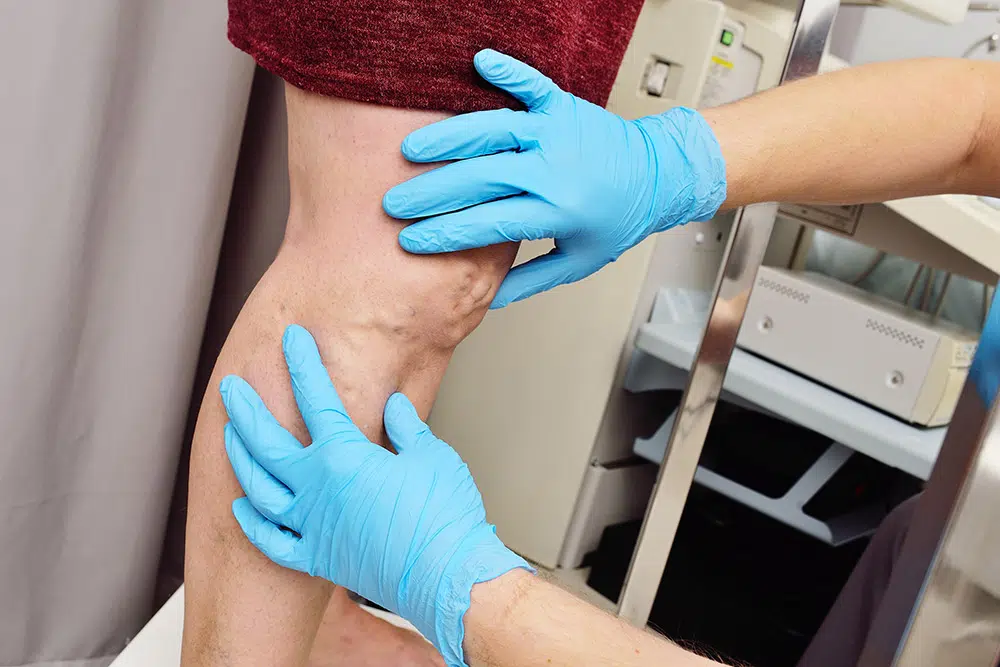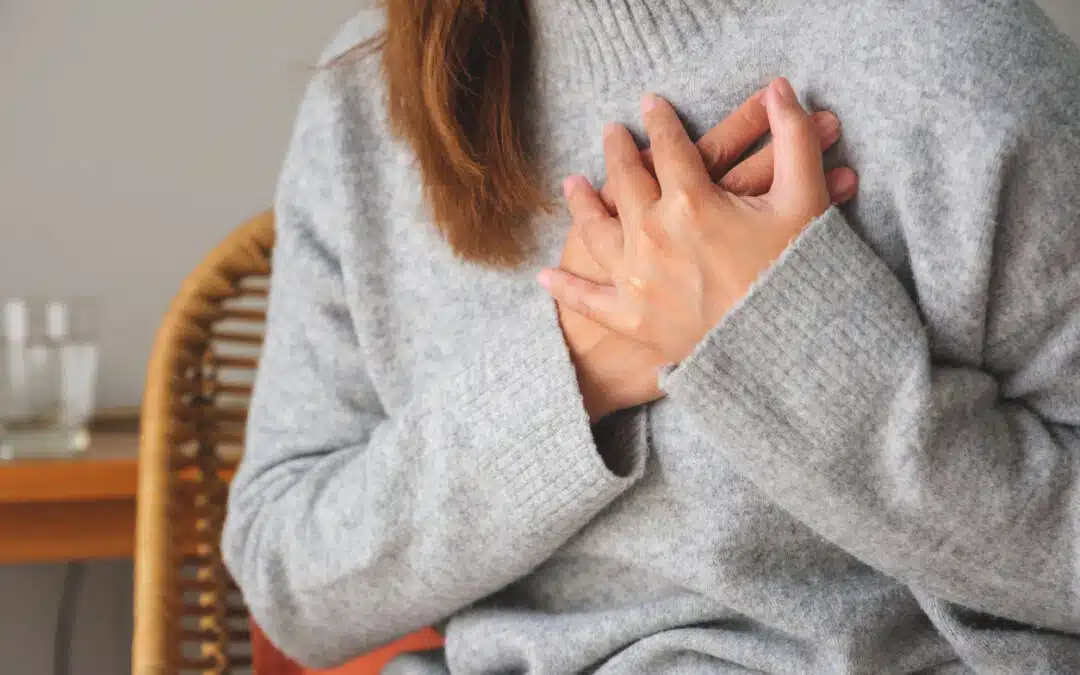Like many medical conditions, deep vein thrombosis often goes undiagnosed until it is too late. The condition—also known as venous thromboembolism—can affect anyone, and often leads to deadly illness, disability, and even death. Luckily, deep vein thrombosis is preventable, and can usually be treated if discovered early.
Read on for more information on the causes behind deep vein thrombosis, treatment, and how to recognize its symptoms. For a more personalized discussion about deep vein thrombosis or other cardiovascular conditions, schedule an appointment with Vital Heart & Vein today.
What is Deep Vein Thrombosis?
Deep vein thrombosis (DVT) is a medical condition that occurs when a blood clot forms inside one or more of the body’s deep veins. DVT is most likely to occur in the lower leg or thigh, although it can present itself in a multitude of places, including the pelvis or arm. Swelling and pain in the affected area is the most common symptom of DVT.
DVT can occur as the result of medical conditions that affect the clotting of blood. There are other potential causes of DVT as well, one being inactivity. These blood clots are extremely dangerous, as they can become dislodged and travel through the bloodstream, potentially blocking the flow of blood to vital areas, such as the lungs (also known as a pulmonary embolism).
The combination of DVT and other conditions such as pulmonary embolisms makes the condition extremely deadly, so it’s important to seek treatment as soon as you are diagnosed.
What Causes Deep Vein Thrombosis?

There are many factors that can trigger the onset of deep vein thrombosis. Some of the most common causes of DVT include:
- Physical trauma
- Surgery, particularly of the hip or leg
- Long periods of inactivity, such as during recovery from injury
- Pregnancy
- Birth control pills or other hormonal medication
- Varicose veins
- Cancer
Since these complications often prevent your blood from flowing normally, they can increase the likelihood of a blood clot forming in your deep veins. If you’ve experienced any of these factors, there is a greater chance that you could develop DVT.
Further Risk Factors
In addition to the above causes for DVT, there are other risk factors that can make you more susceptible to the condition. The more risk factors you have, the greater your chance of contracting DVT. Some of these characteristics include:
- Obesity
- Smoking
- Sitting for long periods, such as at a desk or in a car
- Being 60 or older
- Existing heart conditions
- Family history of DVT
While these factors can indicate the likelihood of developing DVT, deep vein blood clots can occur without an apparent underlying risk factor. The condition can also affect people of any age or body type and should be taken seriously regardless of the patient’s prior health status.
Complications of Deep Vein Thrombosis
While DVT is dangerous in itself, complications of the condition can be deadly. If DVT is not diagnosed and treated quickly, it can lead to complications such as pulmonary embolism and postphlebitic syndrome. Additionally, DVT treatment comes with its own set of risks.
Pulmonary Embolism (PE)
Pulmonary embolism, one of the deadliest complications of DVT, occurs when the lungs are blocked by a blood clot that has become dislodged and traveled through the bloodstream. If the blood clot is large enough, it can prevent blood from reaching the lungs and lead to death.
Postphlebitic Syndrome
Postphlebitic syndrome is caused from reduced blood flow to an affected area due to a deep vein blood clot, resulting in damage to your veins. This damage can lead to painful swelling, skin discoloration, and skin sores.
Treatment Complications
The medication used to treat DVT usually contains blood thinners which have their own set of potentially-fatal risks such as excessive bleeding. It is critical that your doctor be involved in any treatment plan or changes to a treatment plan.
Symptoms of Deep Vein Thrombosis
It’s important to be familiar with the symptoms of DVT so you can respond quickly to any signs that you may be affected. The most common symptoms of DVT are:
- Swelling in the affected area
- Pain or soreness, similar to that of a cramp
- Tenderness
- Red or discolored skin
- A feeling of warmth in the affected area
While these symptoms often indicate the presence of DVT, many people experience no symptoms at all, making it difficult to detect the condition in time to treat it. This is where knowing the risk factors becomes invaluable; you’ll be more likely to detect DVT when you’re aware of your odds of contracting it.
Treatment for Deep Vein Thrombosis
The most common form of DVT treatment is medication. Blood thinners may be prescribed to prevent existing clots from growing, but thrombolytics—also known as “clot busters”—are often used in more serious cases. Compression stockings and vena cava filters are also common treatment methods.
How to Prevent Deep Vein Thrombosis
There are a few simple ways to prevent DVT before it poses a serious threat to you. One of the easiest ways to keep yourself DVT-free is to lead an active lifestyle. Regular exercise lowers your risk of blood clots and helps you maintain a healthy weight—putting you at much less of a risk. If you regularly sit for long periods for work or travel, make sure to take a break every one or two hours to promote blood flow. For those recovering from surgery or illness, gradually start working up to greater activity as soon as possible.
Ask your doctor or consult a specialist to find out more about preventing DVT. A specialist can provide you with more detailed recommendations based on your individual risk factors, and may even prescribe medication to keep the condition from occurring.
Now that you’re aware of the causes and symptoms of DVT, you can recognize the signs of the condition and seek help immediately if necessary. To learn more about DVT and how to prevent it, schedule an appointment with a Vital Heart & Vein physician today.






